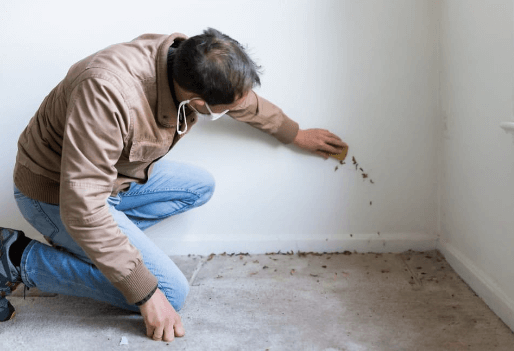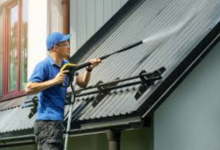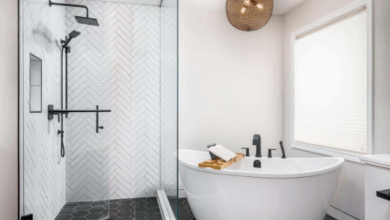How To Identify The Signs Of A Mold Infestation

Mold can be a serious problem in any home, causing health issues and structural damage. It is essential to identify the signs of a mold infestation quickly so that you can take action before it becomes an even bigger issue.
In this article, you’ll learn how to spot the signs of a mold infestation in your home so that you can take control and get rid of it as soon as possible. You’ll discover what types of mold exist, where to look for visible signs, how to check for leaks and moisture, and when to consider testing for mold.
With this information in hand, you’ll be able to identify potential problems and protect your family from harm.
Understand the Different Types of Mold
Different types of mold can cause a range of issues, so it’s important to be aware of them. The most common molds that are found in households include Aspergillus, Cladosporium, Alternaria, Penicillium, and Stachybotrys.
Each type of mold has different characteristics and needs different environmental conditions to thrive. Knowing the signs to look for is key in taking preventative measures against these molds. For instance, Aspergillus and Cladosporium prefer warm temperatures with high humidity while Penicillium and Alternaria prefer cooler environments with lower humidity levels. Stachybotrys tends to grow on wet surfaces such as wood or drywall that has been exposed to moisture from water damage or flooding events.
Understanding these conditions will help you identify potential areas where mold may be present in your home or workplace. It’s also important to recognize the visible signs of mold growth so that you can take steps towards remediation quickly before it spreads further.
Look for Visible Signs of Mold
Be on the lookout for any telltale signs of a mold problem – it can be a nightmare to deal with!
Visible signs of mold include:
* Discolored patches on walls, floors and ceilings
* Look for large, black, fuzzy spots or even dust-like particles that are greenish-black in color.
Musty odors
* You may notice an earthy or musty odor when you enter a room. This is indicative of the presence of spores in the air which could indicate a mold infestation.
Health risks associated with mold
* Long term exposure to certain types of molds can lead to health problems such as skin rashes, asthma attacks, nausea and more serious issues like difficulty breathing and lung infections. To protect your health it’s important to detect potential mold problems early.
It’s important to look for other signs that could indicate water damage caused by plumbing leaks that can lead to mold growth.
Look for Signs of Water Damage
Check for any evidence of water damage – like soft spots on walls, discolored flooring, or peeling paint – to determine if you have a potential mold problem.
It’s important to take preventative measures when it comes to mold infestations, and one of the most effective ways to do this is by checking for signs of water damage.
Look around your property for any visible signs that can indicate moisture in the area, such as warped wood, musty odors, or condensation on windows.
Additionally, check pipes and roofing for leaks or other areas where excess moisture may be present.
If you find signs of water damage, take steps immediately to address the issue before it turns into a mold problem.
Taking these preventative measures can help mitigate future issues with mold growth in your home or business.
By looking out for signs of water damage and using preventative measures to address them early on, you can reduce your risk of dealing with a full-blown mold infestation down the line.
Check for Leaks and Moisture
Knowing where to look for leaks and moisture is key to cleaning up after a mold infestation and nipping any potential problems in the bud. When checking for mold, it’s important to pinpoint the source of excess water or humidity that can lead to a mold infestation.
To do this:
1. Inspect around windows and doors, as well as any openings around plumbing fixtures, for signs of water damage or leaks.
2. Check air quality by looking for condensation on walls and ceilings, as well as feeling areas with your hand for cold spots or sources of dampness which could indicate a leaky pipe inside the wall.
3. Identify sources of moisture such as plumbing issues, HVAC systems, leaking roofs and overflowing gutters or toilets in order to take corrective action before a full-blown infestation takes hold.
4. Look out for musty odors which could point to hidden areas of mold growth behind walls or under floorboards.
By taking these steps, you can identify any hidden sources of moisture in your home before they lead to a mold problem – giving you the power and control over your environment you need to protect yourself from further damage down the line.
Test for Mold
If you suspect that something is amiss, it’s time to take a closer look and test for mold.
You’ll want to feel around for any cold spots or sources of dampness and be sure to keep an eye out for musty odors – all telltale signs of a potential problem.
To further detect the presence of mold, you can purchase at-home testing kits from your local hardware store; these typically require swabbing the surface in question and sending off the sample to a lab for analysis.
If you’re dealing with a larger infestation, however, it may be wise to contact a certified mold inspector who can provide an accurate assessment as well as advice on how best to address the issue.
Take Appropriate Action
Now that you’ve done the hard work of testing for a potential problem, it’s time to take appropriate action – and fast! This could be an overwhelming situation, but don’t worry – with the right help, your problem can be solved in no time flat.
The first step is to assess the extent of the mold infestation. Depending on how severe it is, you may need professional help or you may be able to take care of it yourself. If there are only a few small areas affected by mold growth, then it can probably be handled without outside assistance. However, if there are large amounts of mold or if the infestation has spread over multiple surfaces, then professional remediation services will likely be required.
In either case, taking preventative measures will go a long way towards preventing future mold issues in your home. Make sure to keep moisture levels low by using dehumidifiers and fans. Keep your gutters clean and unclogged. Monitor humidity levels and regulate them as necessary. Repair any plumbing leaks immediately. Use exhaust fans when showering or cooking. Seal up any cracks in walls or windows that let water in. Maintain good air circulation throughout your home by opening windows regularly.
Following these steps should minimize the chances that you’ll have another mold issue down the line.
Conclusion
It’s important to remember that mold can be hazardous, so it’s essential to take the necessary steps to identify and address a mold infestation.
If you suspect you have a problem with mold in your home, don’t wait until it’s too late – make sure to take action as soon as possible.
You may need to enlist the help of a professional if you’re not able to detect the signs yourself.
By taking proactive antiquated measures, you’ll be able to protect your family from any potential health risks associated with mold exposure.
Remember: prevention is always better than cure!








